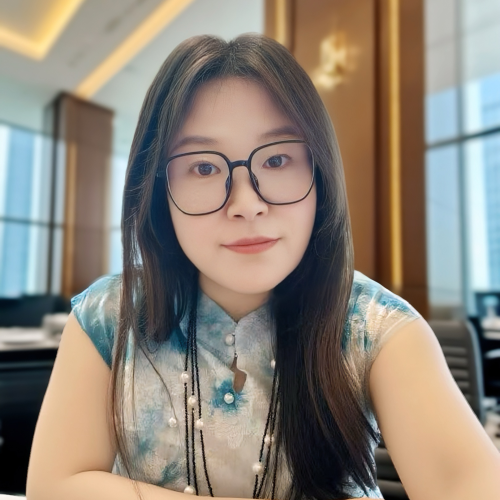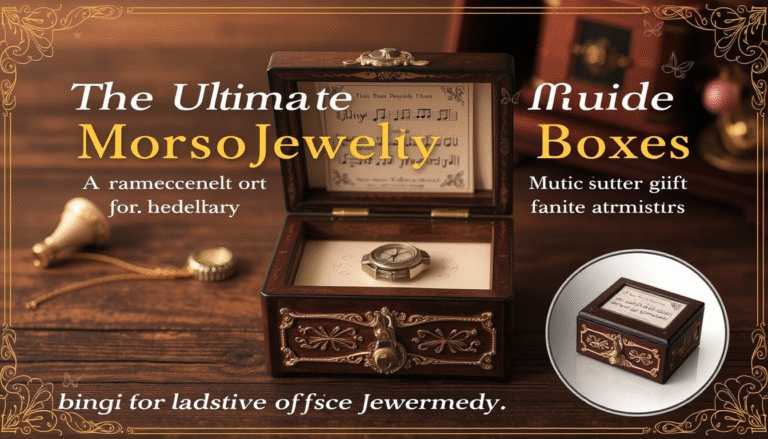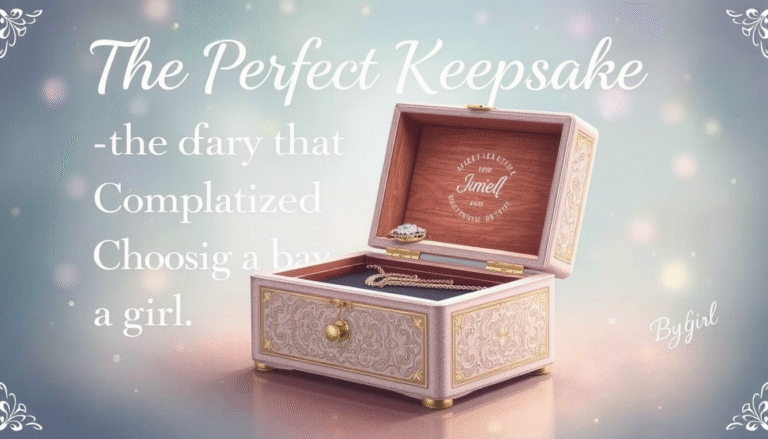A vintage Chinese lacquer jewelry box is beyond a mere box; it is a hidden treasure. The hue of the deep red lacquer glows just as the black polished obsidian. Every box encapsulates the tale of an ancient art, imperial culture, and meticulous work. These items are museum pieces. They are the past made manifest.
What is it about the boxes that make them so fascinating? The secret is the ancient art of lacquer – a laborious technique that is the secret of its signature look. This is paired with intricate hand-painted scenarios or deeply hollowed designs, that gives each box a spirit. Objects in history bring back the memories of their past owners.
This guide is your one-stop shop. Let us take you on the journey through the history, which is both captivating and full of excellent craftsmanship. You will find cues for distinguishing a real piece. The articles will examine the designs for their iconography and provide you with some helpful hints on how to care for your vintage Chinese lacquer jewelry box, so you’ll be able to preserve it for the years to come.

Layers of the past: The history of Chinese lacquerware
Lacquer ware is a story with its origin many thousands of years ago. It begins with the finding of an exceptional sap by the Toxicodendron vernicifluum tree. The sap was not only used for waterproofing and preservation but also for art applications. When this was realized, it was changed into one of the most appreciated decorative arts in China.
The craft had its prime time during the Ming (1368-1644) and Qing (1644-1912) dynasties. In the era of brilliance, the manufacturing of artistic containers was the specialty. The jewelry boxes even got more sophisticated in the Ming Dynasty. They evolved from the humble storage boxes to the mighty status symbols used by the imperial court and affluent merchants.
These containers were not just simple boxes. They were made of superiority. The often mind-blowing complexity of the designs, several sections, and even secret compartments, which are patented technologies mostly. Presently, collectors are mostly after the late Qing Dynasty and Republic period pieces (early to mid-20th century), which are the most sought-after vintage items. Alongside the history of China itself, each one carries a little part of the country.
Understanding the Craftsmanship: Making a Lacquer Box a Work of Art
The first step toward recognizing the worth of a vintage Chinese lacquer jewelry box is to learn the skills and methods used in the craftsmanship. To complete the process is not easy. It requires tremendous patience and skilled professionals. The lacquer, which is applied in many thin layers, is the most important aspect of the whole process as it is a natural polymer that provides a hard, durably, and lustrous finish.
Artisans would use some types of wood that are more resistant to wear, and then apply lacquer coat in built-up layers. The bottom layer was lacquered, and then the workers left it to dry before applying the top layer. The process could take months. After the long, shiny base was completed, it was time for decorating.
The use of different techniques brings the boxes their individual character and charm.
-
Carved Lacquer (Qidiao / 雕漆): Formally this is the most on-edge technique. Carved lacquer, or Qidiao, entails the cutting of elaborate, 3D designs that pass right through the many-layered lacquering. Different color layers, carved through, could be generated to present a stunning stark contrast.
-
Painted Lacquer (Miaoqi / 描漆): This method was used by the painters who painted detailed scenes directly onto the cured lacquer surface with very fine brushes. The delicate artist’s hands crafted the scenes from soft pastel colors showing the daily usual play of the court, for example.
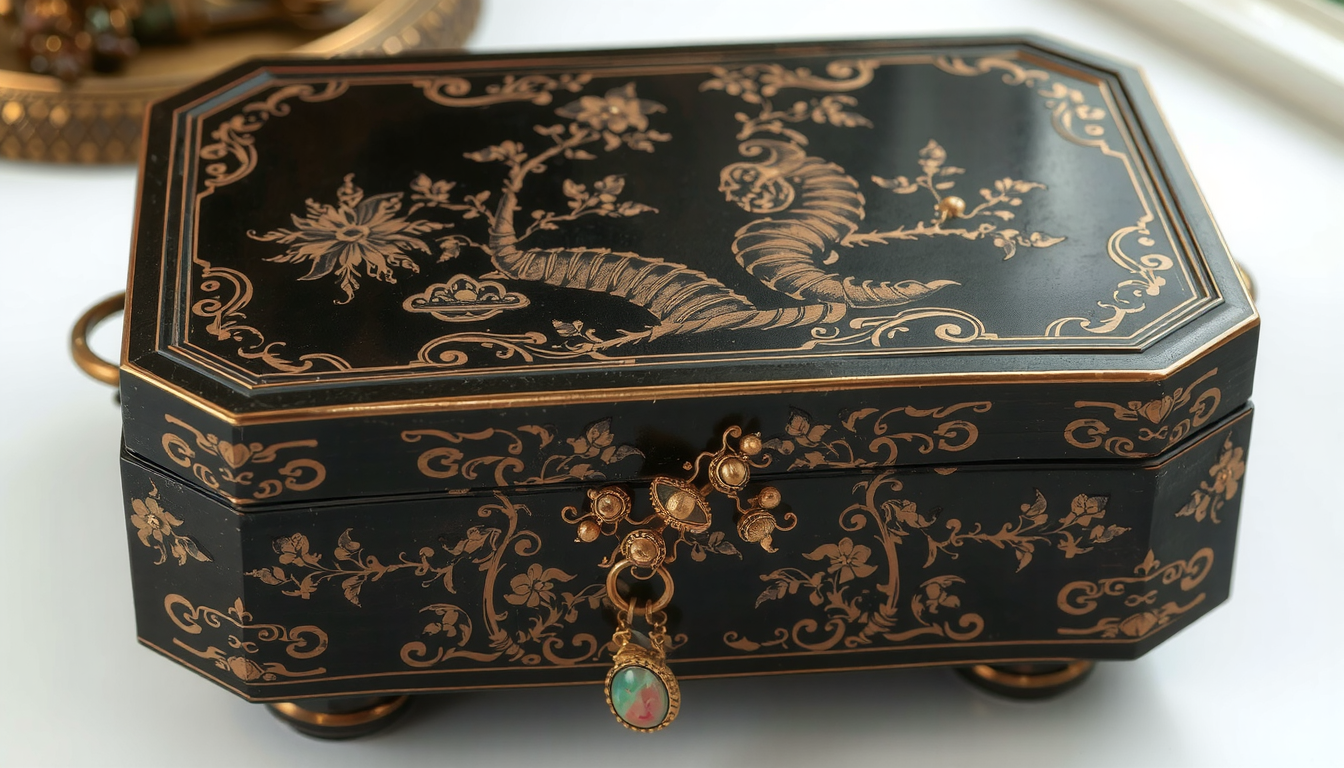
- Inlay Work (Tianqi / 填漆 & Qiangjin / 戧金): This technique is the one where other materials are put into the lacquer. Craftsmen would place inlaid materials like mother-of-pearl, jade, coral, and sometimes even ivory (only on antique pieces) into the lacquer. This method of inlay can be used to create multicolored, complex designs. A related technique, Qiangjin, creates fine incised lines, which are then filled with gold leaf or powder.
What a Collector Looks For: The Signs of a Real Vintage Chinese Lacquer Jewelry Box
Telling the difference between a true vintage piece and a modern reproduction is only possible if you have a well-trained eye. There are some primary indicators that will make your evaluation easier. The unwavering subtlety lies in the unique imperfections and clear signs of wear which are impossible to counterfeit.
To introduce a helpful checklist, here are the characteristics of a genuine vintage Chinese lacquer jewelry box.
-
Look for Patina & Usage Signs: True age tells a real story. Look for a uniform, fine, all-over crazing (a web of small cracks) in the lacquer surface. This is a natural occurrence that pushes over decades. The softened corners, at times, did occur from normal use, rather than being artificially chipped or sanded. Small, stable cracks in the wood or lacquer are usually indicators of an authentic antique.
-
Having a Look at the Work of Art: Authentic vintage items were made by hands. Watch the painted scenes or carved details. You should see the little variations caused by the human operator. Non-paralleled lines or brushstrokes that are of different thickness are good indicators. Machine-made products are tension-free and sterile.
-
Check the Materials Used: The choice of upholstering tells a lot about its quality. The base of the box is frequently made out of solid wood, which contributes to its heavy density. The lacquer surface should be thin, always deeply with luster that feels cool to the touch, which is unlike knives or the glossy. The Patina which formed naturally over time is a brass or bronze hinge. If you see one that has a ‘chemical and artificial old age’ look, be warned that it’s coated.
-
Check the Inside: The design of the interior can tell a lot about the period of manufacture. Most boxes are lined with silk or brocade. Antique textiles may show some signs of fading, slight discoloration, or have a totally different historical pattern. This is visible for instance in this beautiful Chinese Vintage Lacquer & Inlay Jewelry Box. The fitting for the fabric can tell its age as well.
-
What You Feel and the Weight: Simply because of the handling experience, we can assure that these aspects are decisive. A perfect example of a real vintage Chinese lacquer jewelry box has the weight, balance, and density you can notice. It feels heavy when you try to pick it up. The cool and smooth touch of the real lacquer is irreplaceable by any other surface that you can find. At the end of the day, this feedback will probably be the last confirmation that a good collector possesses.
The Language of Emblems: Typical Motifs and Their Meanings
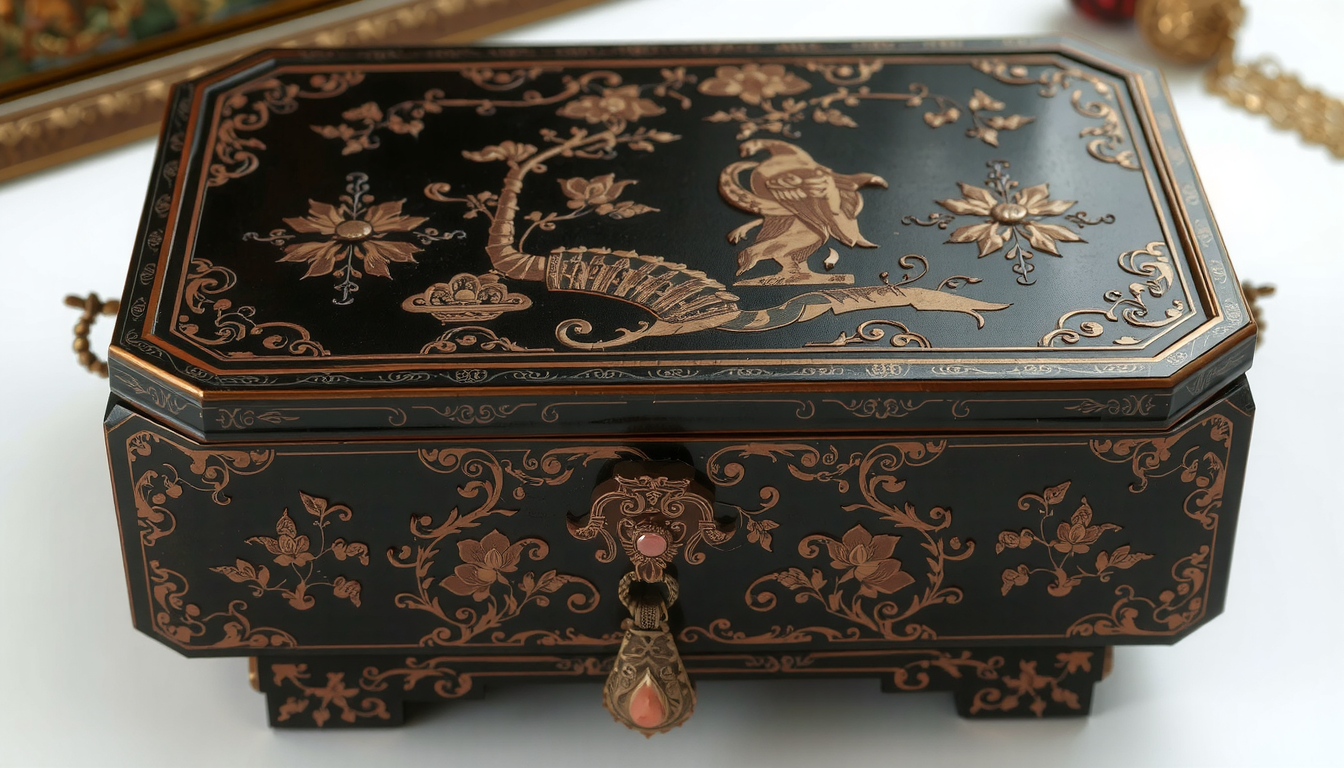
The ornamentations of a vintage Chinese lacquer jewelry box are not only about beauty. They represent a visual language that is loaded with symbolism and cultural significance. In this light, taking notice of motifs is a way of looking at things from a different angle.
| Motif | Meaning |
|---|---|
| Dragon & Phoenix | The highest symbols of imperial power, happiness, and harmony in the cosmos. Coupled, they express a harmonious marriage and martial bliss. |
| Courtly Ladies / Scholars | They visualize the ideal life of the refined, peaceful, and intellectual person whiling away time in a lovely garden or pavilion. |
| Peonies & Plum Blossoms | The peony is the “king of flowers,” which stands for wealth, honor, and nobility. The plum blossom is a flower that blooms in winter, which symbolizes tenacity, purity, and beauty. |
| Cranes & Bats | Cranes are symbols of long life and eternal life. Bats are a visual pun, as the word for bat (fú) sounds like the word for good fortune (fú), which is a sign of happiness. |
| Landscapes (Shanshui) | Shanshui, meaning “mountain-water,” is a representation of more than just landscapes. It shows the Daoist goal of promoting human-nature harmony. |
Safeguarding the heirloom: Maintaining a Vintage Lacquer Jewelry Box
Adherence to the proper care is the best way to protect the investment you made. You want to make sure that lacquer box is going to be wonderful heirloom for the generations. A careful and well-informed procedure is always needed since they are delicate objects. The easiest to follow are these golden rules in conservation.
- Keep Away from Direct Sunlight and Heat: UV light is the mortal enemy of lacquer. It makes it brittle and empties it of its colors completely. Therefore, store your box away from windows and direct heat sources such radiators or fireplaces.
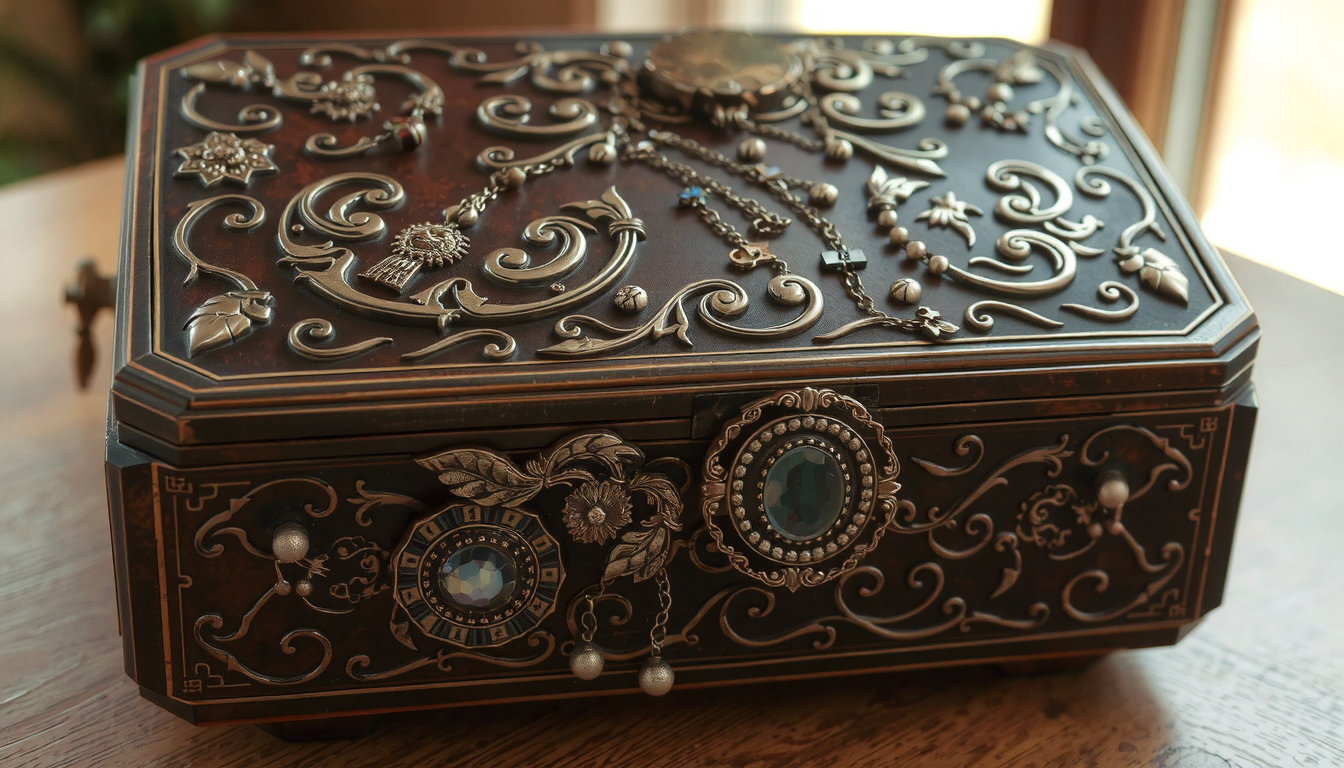
-
Control Humidity: Extreme temperature changes can really hurt your things. In very dry conditions, the wood base tends to shrink which causes lacquer cracking. High humidity can bring about mildew and swelling. A regular room environment is the best for keeping it.
-
Gentle Dusting: For cleaning the dust, use only a very soft and dry cloth. A microfiber, silk, or fine cotton cloth is ideal. Never use those feather dusters, because they can have pointed quills, and that will scratch the surface.
To achieve a slightly more thorough cleaning follow these steps carefully:
- Begin by dusting the entire surface with a soft, dry cloth to remove any loose particles.
- If necessary, slightly dampen a separate clean, soft cloth with distilled water. Wring it out thoroughly until it is almost completely dry to the touch.
- Gently wipe a small section of the lacquer surface.
- Immediately buff the area dry with another clean, dry, soft cloth.
- Crucially, never use chemical cleaners, furniture polish, wax, abrasives, or excessive amounts of water. These will permanently damage the delicate lacquer finish.
Choosing Your Ideal Item: Where to Buy and Determine the Price
Hunting the genuine vintage Chinese lacquer jewelry box is a joyful and satisfying experience. The first step in this journey is knowing where to look.
- Antique Shops & Estate Sales: These are the premier places to check out as you get the best of both worlds. After you inspect the item by feeling its weight, its craftsmanship, and its age, then make your decision.
- Reputable Online Marketplaces: Websites like Chairish, 1stDibs, and specialized antique sellers on platforms like Etsy are excellent resources. Always check seller reviews, request detailed photos, and understand the return policy before purchasing.
- Auction Houses: When it comes to very rare, high-value items, the best venues are reputable auction houses. Aside from that, they usually offer detailed and provenance and condition reports.
A vintage Chinese lacquer jewelry box price can be very different from one piece to another. Multiple age factors play a role in setting a price alongside condition, rarity, artwork quality, and materials. It is possible to get a simple painted box from the mid-20th century for less than $100. A great example of a carved or mother of pearl inlaid box from the 19th century, in great shape, can be worth thousands.
The Most Common Questions (FAQ) about Vintage Chinese Lacquer Jewelry Boxes
What is the difference between a Chinese lacquer box and a Japanese lacquer box?
Even though the traditions are both ancient and highly prized, a few differences are seen in the styles. Chinese lacquerware mostly has heavily carved designs (Qidai) or elaborately painted scenes with pictures. The Japanese lacquerware is famous due to the Maki-e (“sprinkled picture”) technique, which applies fine gold and silver powders to create often subtle, nature-focused, and exquisitely detailed patterns.
Is my vintage Chinese lacquer jewelry box worth something?
The value of the lacquer jewelry box is determined by four elements: age, condition, craftsmanship, and rarity. A very old box that is still intact from the Qing Dynasty featuring detailed mother-of-pearl inlay and original hardware is definitely worth more than a more common mid-20th-century box that has condition issues. If the item might be of high value, always the best way is to get a professional appraisal from an expert on Asian antiques.
Why does my old lacquer box have a strange smell?
Authentic urushi lacquer is a natural tree sap and can retain a very faint, slightly sweet scent, depending on the environmental conditions. In addition, the lacquer box may also emit a scent if the box was initially finished with linseed oil which will eventually evaporate as it dries.

